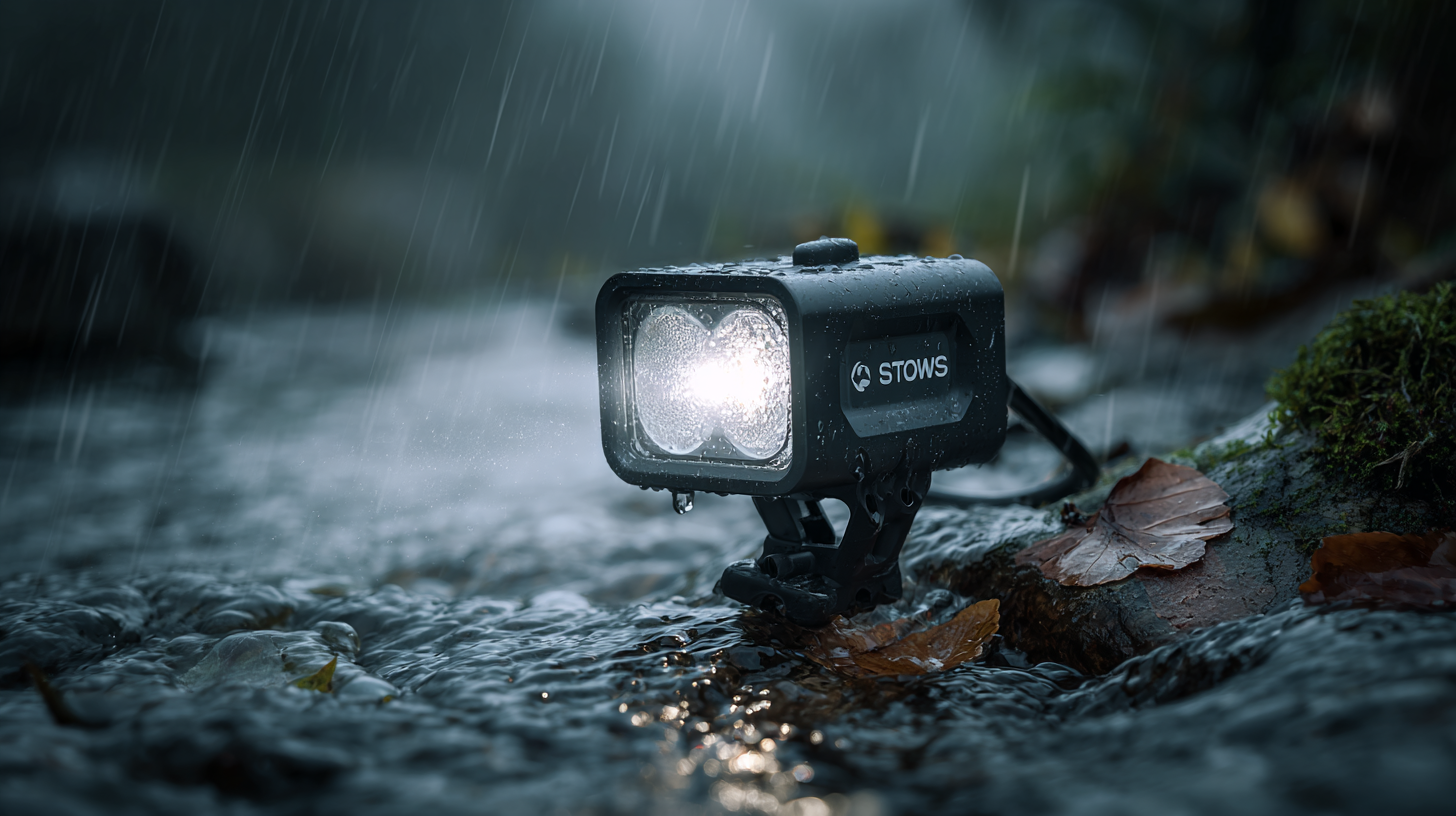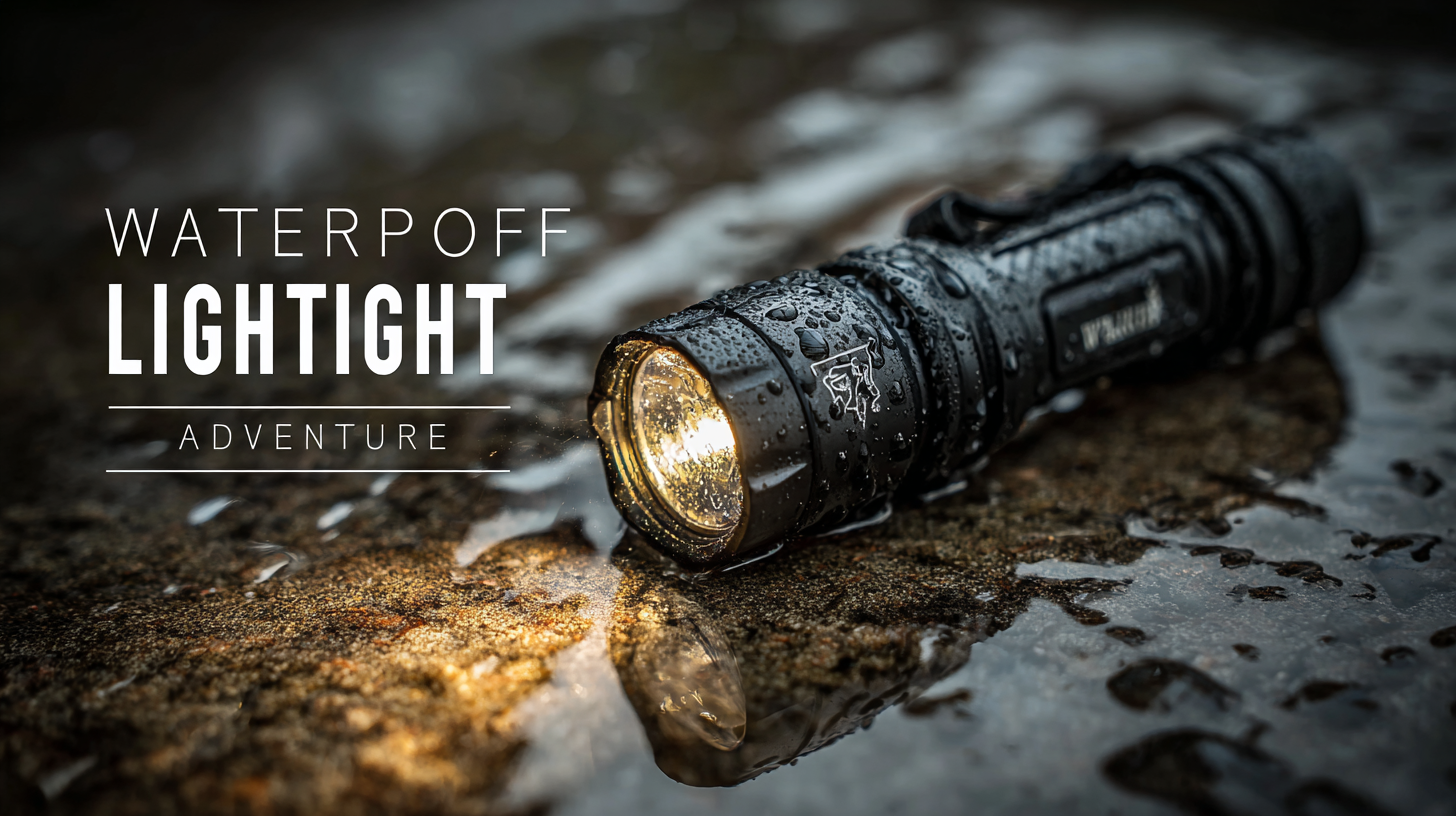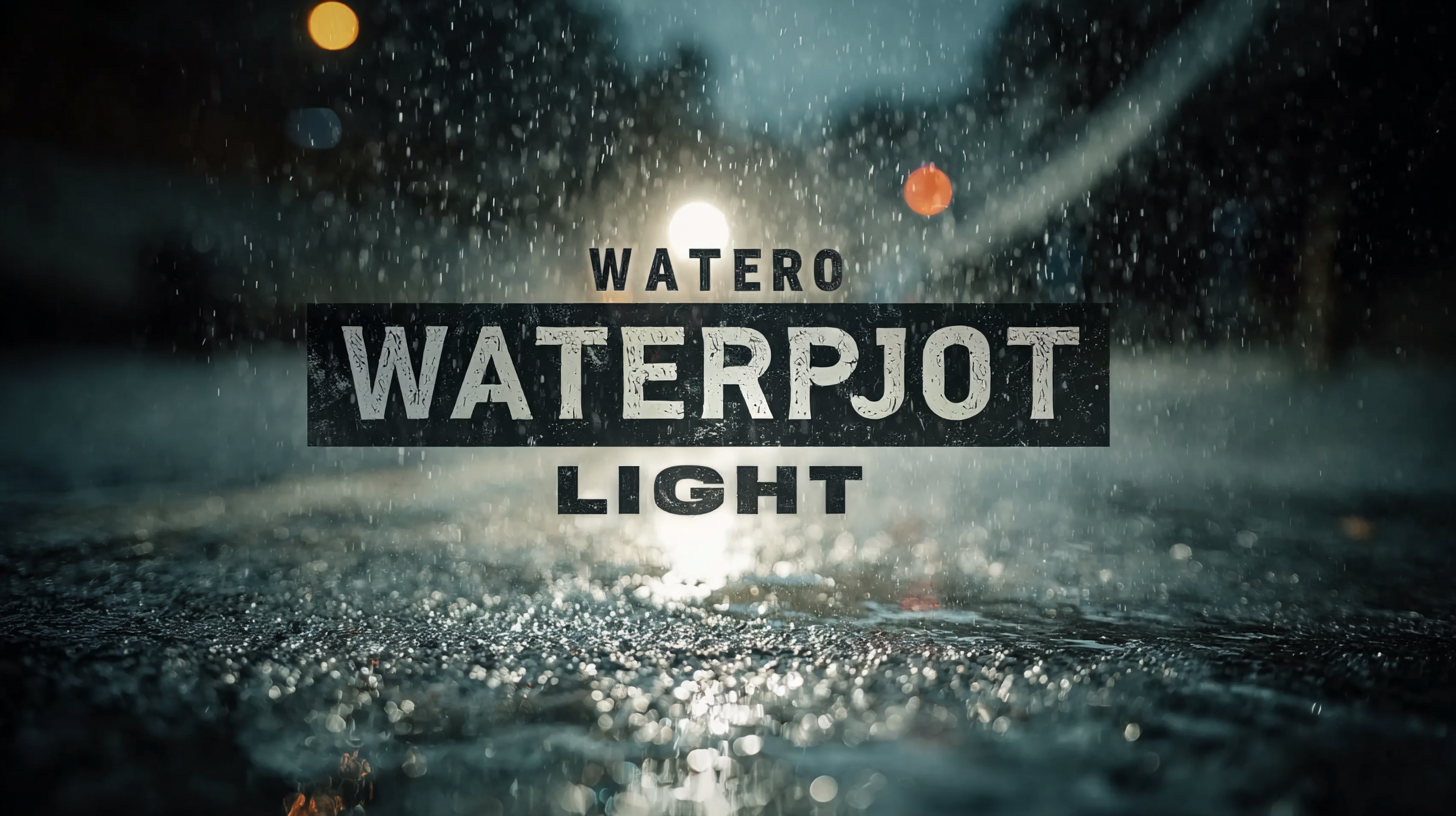
When embarking on outdoor adventures, ensuring visibility and safety in diverse weather conditions is paramount. One essential piece of gear that often gets overlooked is the waterproof light. According to a recent report by ResearchAndMarkets, the global waterproof lighting market is projected to grow significantly, driven by increasing outdoor recreational activities and the demand for reliable lighting solutions in adverse conditions. With a staggering percentage of outdoor enthusiasts indicating that poor visibility was a major concern during their activities, choosing the right waterproof light becomes crucial. Whether you're camping, hiking, or engaging in water sports, the ability to withstand rain, snow, and splashes is essential.

In this blog, we will explore the critical considerations for selecting the best waterproof light tailored to your adventure needs, highlighting key features and industry insights to help you make an informed choice.
When choosing the best waterproof light for your outdoor adventures, understanding the various waterproof ratings is crucial. The IP (Ingress Protection) rating system helps consumers comprehend how well a product can withstand the elements. For instance, an IP67 rating means that the device is dust-tight and can withstand being submerged in water up to one meter for about 30 minutes. On the other hand, IP68 indicates more resilience, usually allowing for prolonged submersion beyond one meter—ideal for extreme outdoor conditions.
Tip: Always consider the depth and duration of water exposure you expect during your activities. If you’re planning a kayaking trip, lights with an IPX7 or IP68 should be prioritized, as they ensure reliable performance in deeper water for extended periods.
In addition to waterproof ratings, it is essential to be aware of how these ratings can affect the product’s durability. For electronic gadgets, including outdoor lighting, the IPX standard indicates water resistance without a dust rating. An IPX4 rated product can resist splashes from any direction, while an IPX7 offers more protection against immersion.
Tip: Look for products that boast both high water and dust ratings for the best protection against nature’s elements. Products labeled with a MIL-Spec rating may offer additional assurance of durability, especially in rugged, outdoor environments.
When selecting the best waterproof light for outdoor adventures, several key features should be prioritized to ensure durability and effectiveness. First and foremost, the Ingress Protection (IP) rating is crucial. Lights with an IP67 rating can withstand submersion in water up to 1 meter for 30 minutes, making them ideal for unpredictable weather conditions. According to a recent industry report by Statista, the outdoor lighting market is projected to reach $29 billion by 2026, underscoring the growing demand for reliable waterproof options.
Another essential feature to consider is brightness, measured in lumens. A good waterproof light should ideally provide at least 200 lumens for effective visibility during nighttime activities. A study published in the Journal of Outdoor Lighting indicates that proper lighting can enhance safety and visibility by up to 50% in outdoor environments. Additionally, battery life is a critical aspect; lights that offer a runtime of at least 10 hours on a single charge will ensure they remain functional throughout your adventure, even in remote areas where recharging may not be feasible. By focusing on these features, you can select a waterproof light that meets the demands of any outdoor excursion.

When selecting the best waterproof light for your outdoor adventures, understanding the differences between battery life and power source options is crucial. According to a report from the Outdoor Industry Association, 68% of outdoor enthusiasts prioritize gear reliability and longevity, making battery performance a key factor in their decision-making process. LED lights, for instance, typically offer impressive battery life, with some models lasting up to 60 hours on a single charge. This is significantly longer than traditional incandescent bulbs, which may only last 10-15 hours, thus making LED lights a superior choice for extended excursions.
Additionally, power source options vary widely, influencing both convenience and sustainability for adventurers. While disposable batteries are often seen in budget-friendly models, rechargeable options are gaining traction among eco-conscious consumers. A study by the Consumer Electronics Association found that rechargeable lights are favored by 75% of users for their reduced environmental impact. Furthermore, solar-powered lights are emerging as a viable contender for outdoor enthusiasts seeking renewable energy. With advancements in solar technology, some models can recharge fully in 6-8 hours of sunlight, providing a sustainable solution for those venturing into the great outdoors.

When selecting a waterproof light for your outdoor adventures, durability and build quality are paramount to ensure longevity in tough conditions. Outdoor environments can be harsh, and your gear should withstand rough handling, extreme temperatures, and exposure to moisture. Look for lights constructed with robust materials such as aluminum or high-grade plastic that can resist impact and corrosion. Furthermore, check for features like sealed battery compartments to minimize the risk of water damage, ensuring the light remains functional no matter the weather.
Tip 1: When shopping for a waterproof light, familiarize yourself with the Ingress Protection (IP) rating. Lights with a higher IP rating indicate better resistance to water and dust. An IP67 rating, for example, means the light can be submerged in water up to a meter without damage.
Tip 2: Pay attention to the lens quality as well. A high-quality, tempered glass lens will not only enhance light transmission but also provide greater resistance to scratches and impacts, prolonging the lifespan of your light.
Choosing a waterproof light that features excellent durability and build quality will enhance your outdoor experience, giving you the confidence to explore without worrying about your gear. Consider these factors to find the perfect companion for your adventures.
When selecting a waterproof light for your outdoor adventures, understanding beam distance and brightness is key to finding the ideal fit. According to the National Fire Protection Association (NFPA), brightness is typically measured in lumens. For outdoor activities, a light emitting between 200 to 500 lumens is considered suitable for general use, ensuring you have adequate visibility without blinding others. A focused beam distance, measured in meters, is equally important; lights offering a beam distance of at least 50 meters can illuminate your path effectively, particularly in remote areas.
